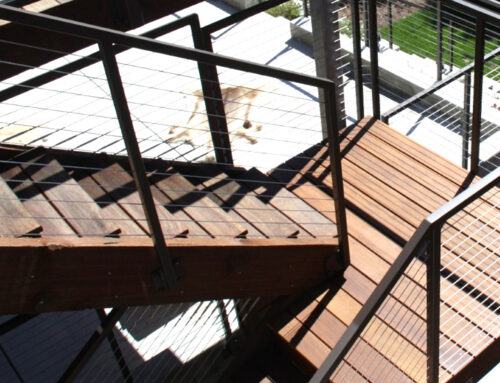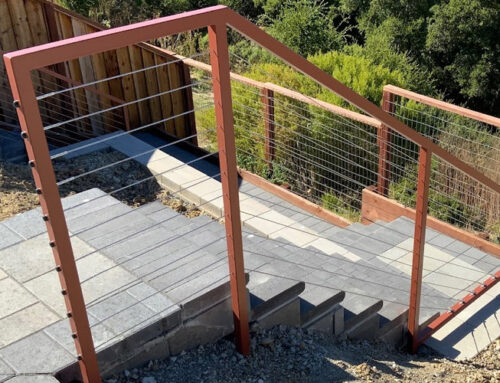You might be most familiar with stainless steel as an option for your kitchen appliances or your knives. Far from just an aesthetic option, stainless steel is a useful material that resists rust and corrosion, which are often the two largest concerns when it comes to steel performance. In railings, we use stainless steel in order to provide better durability and longevity. You might be surprised about why your choice of stainless steel matters.
1. Stainless Steel is an Alloy
Perhaps because we often think of stainless steel as a “finish” many people think that it is just steel with a special finish applied on top. But, stainless steel is actually an alloy, or a mixture of two metals. Stainless steel must be steel mixed with at least 11% chromium. It may also have other metals or nonmetals mixed in to improve its properties for specific uses.
2. There are Types of Stainless Steel
As there are a variety of other substances that we might mix in with stainless steel, there are types of stainless steel. In fact, there are broad categories like “ferritic” stainless steel which cover a handful of very specific stainless steel products.
One of the most important types of stainless steel to know is austenitic stainless steel. Two thirds of all stainless steel produced is this austenitic. All have a strong microstructure, allowing manufacturers to skip the hardening process, which is usually about making the microstructure better.
3. There are Levels of Corrosion Resistance
Corrosion is the most serious performance concern for most stainless steel. While the promise of stainless steel is that it can resist these forces, the different types of stainless steel have different abilities to do this.
For example, 316 marine grade steel is among the best performing options. It is resistant to a wider range of corrosive medias and can even resist the corrosion issues which occur from welding. This steel has molybdenum mixed in to achieve this resistance.
As its name would suggest, marine grade steel can withstand salt spray and brine, two of the most corrosive medias for steel, which cause pitting corrosion. Most steels resist crevice corrosion, but marine grade steel is known for better resistance to pitting corrosion.
4. Stainless Steel Isn’t Friends with Aluminum
Why not reduce the overall cost of your stainless-steel project by using aluminum fasteners? Aluminum is a less expensive metal, but it does not play nice with any kind of steel. Together, the two metals cause galvanic corrosion, where one metal forces the other to corrode much faster than it would on its own. All-steel construction is important for any project.
5. There are Stainless Steel Finishes
There are over ten different finishes that a steel mill may apply to your stainless steel. The options that might interest you for a railing project include:
- 4: Brushed finish
- 5: Satin finish
- 6: Matte finish
These finished look smoother and more reflective as the number increases. So, No. 6 is brushed smoother than No. 4.
Stainless steel is a group of materials, so it is important to know which is being used for your railing or other project.






